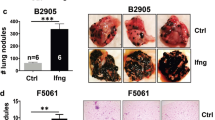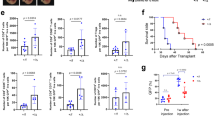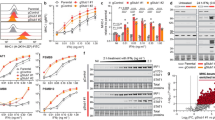Abstract
Bortezomib is a proteasome inhibitor that can synergize with interferon-alpha (IFN-α) to induce apoptosis in melanoma cells in vitro and inhibit tumor growth in vivo. We hypothesized that proteasome inhibition may be an effective means to sensitize melanoma cells to the direct effects of IFN-α. Pre-treatment of human melanoma cells with bortezomib led to significantly increased transcription of interferon-stimulated genes as determined by real-time PCR. Flow cytometric and immunoblot analyses indicated that the enhanced direct actions of IFN-α on melanoma cells were the result of prolonged phosphorylation of STAT1 (P-STAT1) on both the Tyrosine701 and Serine727 residues. In contrast, the enhanced IFN-α-induced P-STAT1 was not observed in peripheral blood mononuclear cells that were pre-treated with bortezomib. These data suggest that proteasome inhibition represents a mechanism to enhance the direct effects of IFN-α on melanoma cells thereby complementing its immunostimulatory properties.






Similar content being viewed by others
References
American Cancer Society (2007) Cancer facts and figures for 2006. American Cancer Society, Atlanta
Kabbarah O, Chin L (2005) Revealing the genomic heterogeneity of melanoma. Cancer Cell 8(6):439–441
Belardelli FM, Ferrantini E, Proietti et al (2002) Interferon-alpha in tumor immunity and immunotherapy. Cytokine Growth Factor Rev 13(2):119–134
Gogas H, Ioannovich J, Dafni U et al (2006) Prognostic significance of autoimmunity during treatment of melanoma with interferon. N Engl J Med 354(7):709–718
Lesinski GB, Anghelina M, Zimmerer J et al (2003) The anti-tumor effects of interferon-alpha are abrogated in a STAT1-deficient mouse. J Clin Invest 112(2):170–180
Moschos SJ, Edington HD, Land SR et al (2006) Neoadjuvant treatment of regional stage IIIB melanoma with high-dose interferon alfa-2b induces objective tumor regression in association with modulation of tumor infiltrating host cellular immune responses. J Clin Oncol 24(19):3164–3171
Levy DE, Gilliland DG (2000) Divergent roles of STAT1 and STAT5 in malignancy as revealed by gene disruptions in mice. Oncogene 19(21):2505–2510
Pansky A, Hildebrand P, Fasler-Kan E et al (2000) Defective Jak-STAT signal transduction pathway in melanoma cells resistant to growth inhibition by interferon-alpha. Int J Cancer 85(5):720–725
Thyrell L, Erickson S, Zhivotovsky B et al (2002) Mechanisms of interferon-alpha induced apoptosis in malignant cells. Oncogene 21(8):1251–1262
Jackson DP, Watling D, Rogers NC et al (2003) The JAK/STAT pathway is not sufficient to sustain the antiproliferative response in an interferon-resistant human melanoma cell line. Melanoma Res 13(3):219–229
Lesinski GB, Trefry J, Brasdovich M et al (2007) Melanoma cells exhibit variable signal transducer and activator of transcription 1 phosphorylation and a reduced response to IFN-alpha compared with immune effector cells. Clin Cancer Res 13(17):5010–5019
Lesinski GB, Raig ET, Guenterberg K et al (2008) IFN-alpha and bortezomib overcome Bcl-2 and Mcl-1 overexpression in melanoma cells by stimulating the extrinsic pathway of apoptosis. Cancer Res 68(20):8351–8360
Vermes I, Haanen C, Steffens-Nakken H et al (1995) A novel assay for apoptosis. Flow cytometric detection of phosphatidylserine expression on early apoptotic cells using fluorescein labelled Annexin V. J Immunol Methods 184(1):39–51
Kramer C (1956) Extension of multiple range tests to group means with unequal numbers of replications. Biometrics 12:309–310
Gollob JA, Sciambi CJ, Huang Z et al (2005) Gene expression changes and signaling events associated with the direct antimelanoma effect of IFN-gamma. Cancer Res 65(19):8869–8877
Pamment J, Ramsay E, Kelleher M et al (2002) Regulation of the IRF-1 tumour modifier during the response to genotoxic stress involves an ATM-dependent signalling pathway. Oncogene 21(51):7776–7785
Caraglia M, Vitale G, Marra M et al (2004) Alpha-interferon and its effects on signalling pathways within cells. Curr Protein Pept Sci 5(6):475–485
Chawla-Sarkar M, Lindner DJ, Liu YF et al (2003) Apoptosis and interferons: role of interferon-stimulated genes as mediators of apoptosis. Apoptosis 8(3):237–249
Adams J (2004) The proteasome: a suitable antineoplastic target. Nat Rev Cancer 4(5):349–360
Hamilton AL, Eder JP, Pavlick AC et al (2005) Proteasome inhibition with bortezomib (PS-341): a phase I study with pharmacodynamic end points using a day 1 and day 4 schedule in a 14-day cycle. J Clin Oncol 23(25):6107–6116
Armeanu S, Krusch M, Baltz KM et al (2008) Direct and natural killer cell-mediated antitumor effects of low-dose bortezomib in hepatocellular carcinoma. Clin Cancer Res 14(11):3520–3528
Voortman J, Resende TP, Abou El Hassan MA et al (2007) TRAIL therapy in non-small cell lung cancer cells: sensitization to death receptor-mediated apoptosis by proteasome inhibitor bortezomib. Mol Cancer Ther 6(7):2103–2112
Papageorgiou A, Kamat A, Benedict WF et al (2006) Combination therapy with IFN-alpha plus bortezomib induces apoptosis and inhibits angiogenesis in human bladder cancer cells. Mol Cancer Ther 5(12):3032–3041
Acknowledgments
The authors thank the Ohio State University Comprehensive Cancer Center Analytical Cytometry and Nucleic Acid Shared Resources. The Harry J. Lloyd Charitable Trust, The Melanoma Research Foundation, The Valvano Foundation for Cancer Research Award (to G.B. Lesinski), National Institutes of Health (NIH) Grants CA84402, K24 CA93670 (to W.E. Carson), K22 CA134551 (to G.B. Lesinski), P30-CA16058, P01-CA95426 (to M.A. Caligiuri), and Millennium Pharmaceuticals, Inc., and Johnson & Johnson Pharmaceutical Research & Development, L.L.C.
Author information
Authors and Affiliations
Corresponding author
Rights and permissions
About this article
Cite this article
Lesinski, G.B., Benninger, K., Kreiner, M. et al. Bortezomib pre-treatment prolongs interferon-alpha-induced STAT1 phosphorylation in melanoma cells. Cancer Immunol Immunother 58, 2031–2037 (2009). https://doi.org/10.1007/s00262-009-0710-y
Received:
Accepted:
Published:
Issue Date:
DOI: https://doi.org/10.1007/s00262-009-0710-y




